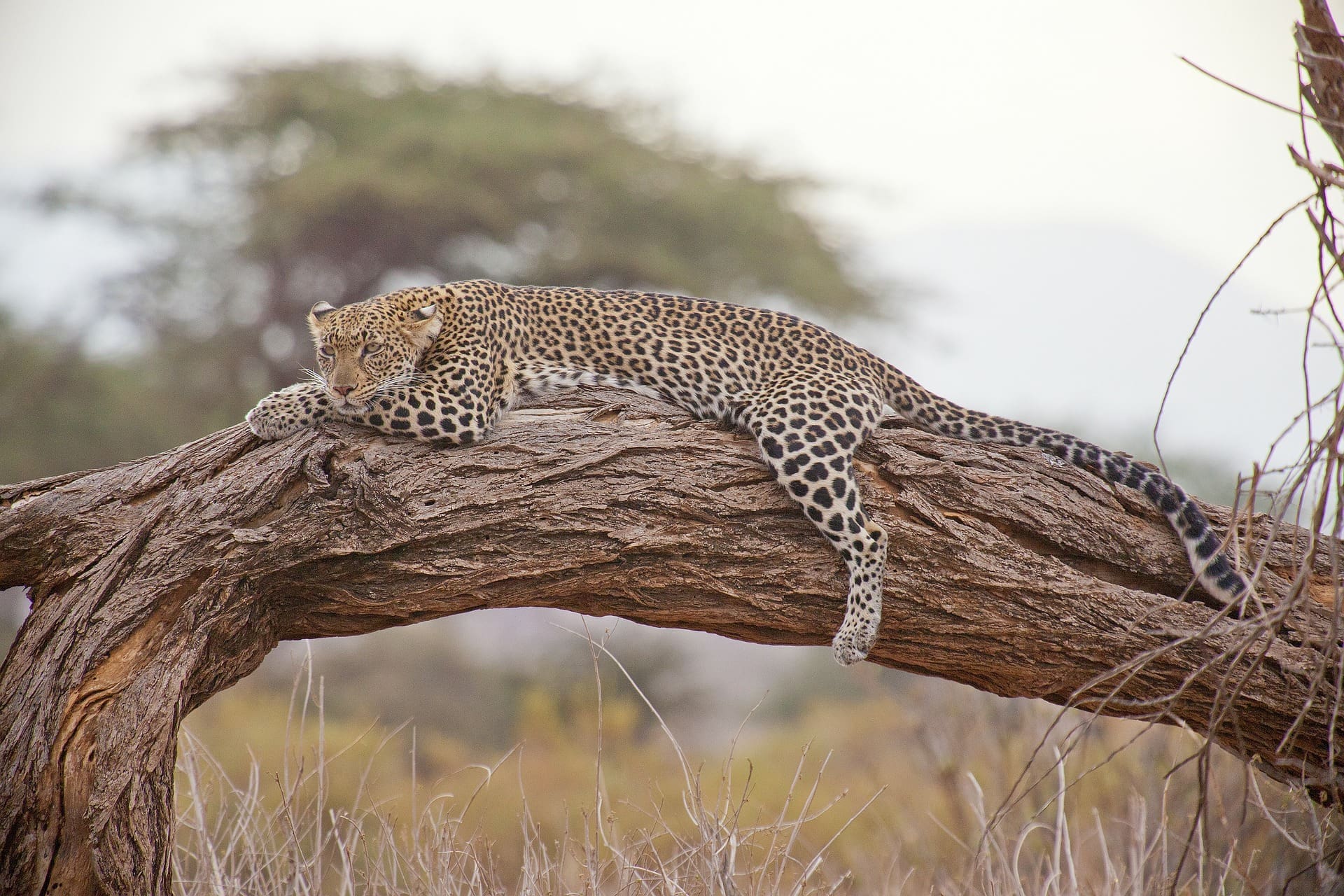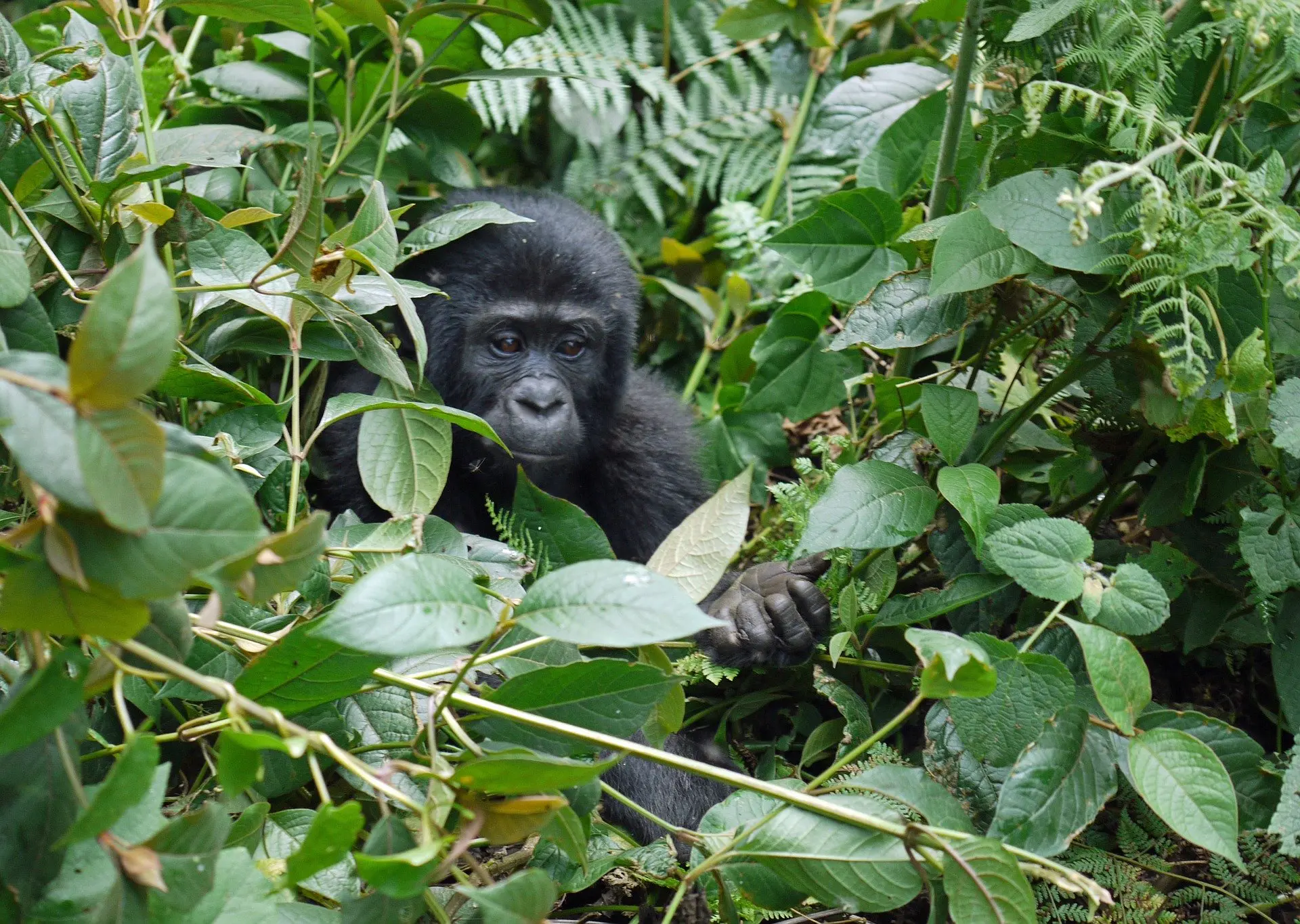Imagine this: endless golden savannas, elephants silhouetted against fiery sunsets, and the raw thrill of spotting a lion on the prowl. Africa’s national parks offer the ultimate escape.
These parks aren’t just destinations—they’re gateways to some of the most breathtaking wildlife encounters on Earth.
Whether you’re seeking heart-pounding game drives in Africa or tranquil moments in nature, exploring the best national parks in Africa is a journey you’ll never forget.
1. Serengeti National Park, Tanzania
Let’s kick things off with an icon. Serengeti National Park is the crown jewel of Tanzania and arguably the best national park in Africa for wildlife enthusiasts.
Its endless plains, punctuated by acacia trees, set the stage for some of the most dramatic wildlife spectacles on the planet.
Why Visit?
If you’ve ever dreamed of witnessing the Great Migration—where over two million wildebeest, zebras, and gazelles thunder across the plains—this is the place. And it’s not just about the migration. The Serengeti is home to the famed Big Five: lion, leopard, elephant, buffalo, and rhino, alongside over 500 species of birds.
Must-Do Activities:
- Game Drives: Experience the thrill of spotting predators in action during a sunrise or sunset drive.
- Hot Air Balloon Safaris: Soar above the savanna and watch the wildlife from an entirely new perspective.
- Walking Safaris: For those who want to feel truly connected to nature, there’s nothing like trekking through the wilderness on foot.
The Serengeti’s ecosystem has remained virtually unchanged for millions of years, making it a timeless wonder.

2. Masai Mara National Reserve, Kenya
Cross the border into Kenya, and you’ll find yourself in another contender for the best national park in Africa: the Masai Mara.
Known as the Serengeti’s wilder sibling, the Masai Mara is a hotspot for wildlife action and cultural experiences.
Why Visit?
Every year, the Masai Mara hosts one of nature’s greatest dramas: the Great Migration. Picture this—wildebeest leaping across crocodile-infested rivers while predators lurk nearby. Beyond the migration, the reserve is also home to vibrant Maasai communities, whose culture adds a rich layer to your visit.
Must-Do Activities:
- Game Drives: With some of the best wildlife density in Africa, you’re almost guaranteed to see the Big Five here.
- Cultural Tours: Spend a day with the Maasai people to learn about their traditions and way of life.
- Hot Air Balloon Safaris: The Masai Mara is one of the best places for a balloon ride, especially during migration season.
The Masai Mara boasts over 450 bird species, making it a birder’s paradise.
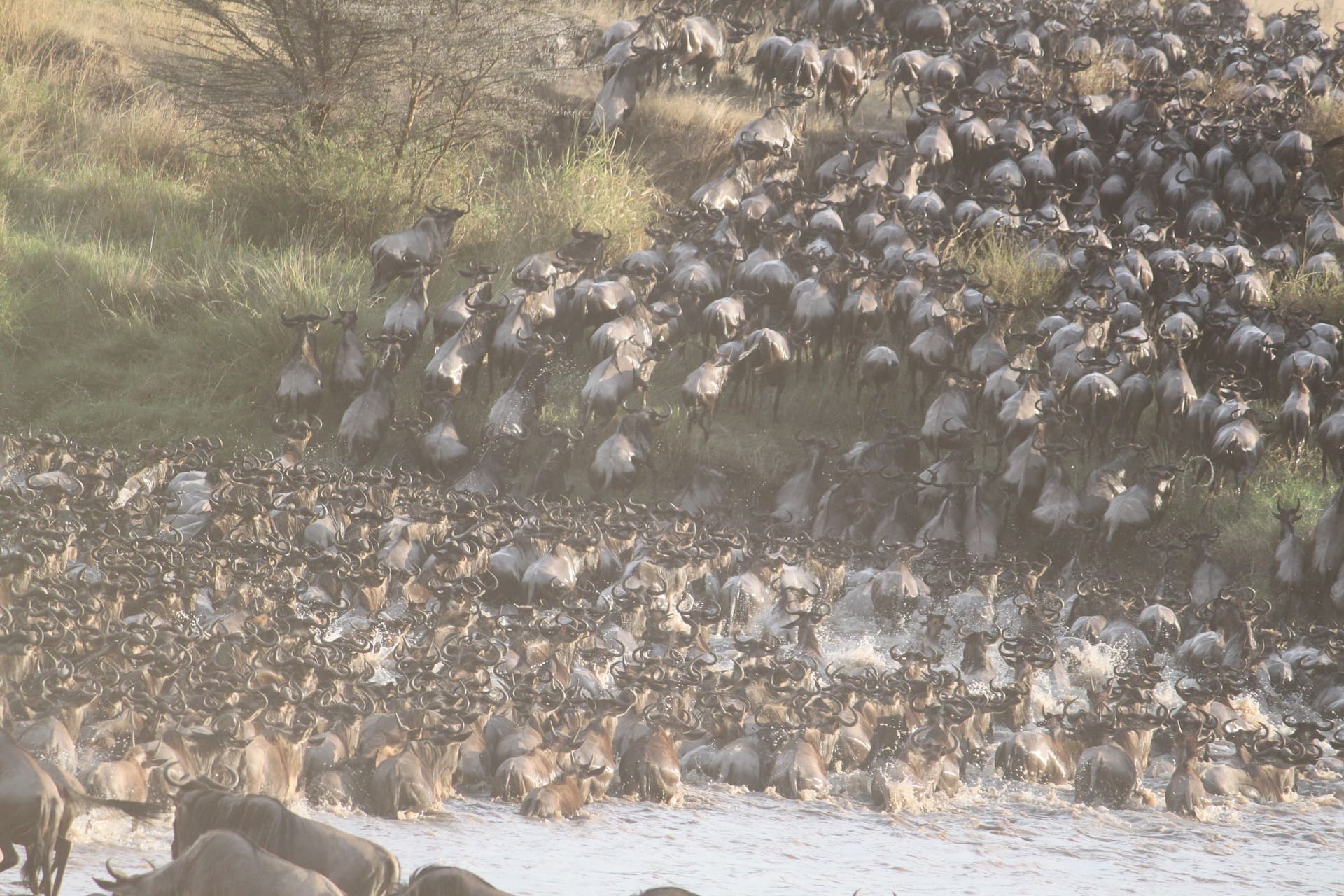
3. Kruger National Park, South Africa
When it comes to accessibility, variety, and sheer size, Kruger National Park is hard to beat. As one of Africa’s largest and most famous wildlife reserves, this South African gem delivers an unforgettable safari experience tailored to all kinds of travelers.
Whether you’re a seasoned explorer or dipping your toes into the world of safaris for the first time, Kruger makes it easy to fall in love with the wild.
Why Visit?
Kruger is one of the few parks where you can see the Big Five on a self-drive safari. Imagine cruising through well-maintained roads with lions lounging in the shade, elephants crossing in front of your car, and giraffes grazing nearby. Its diverse ecosystems mean no two game drives in Kruger are ever the same.
Must-Do Activities:
- Self-Drive Safaris: Perfect for independent adventurers who want the flexibility to explore at their own pace.
- Guided Game Drives: If you’d prefer expert insights, hop on a guided tour to enhance your experience.
- Night Drives: Witness the nocturnal side of Kruger, where elusive creatures like leopards and hyenas come alive.
Kruger National Park is divided into 14 distinct ecological zones, each teeming with unique flora and fauna, from vast savannas to lush riverine forests.
Read Next: Where To Stay In Kruger National Park
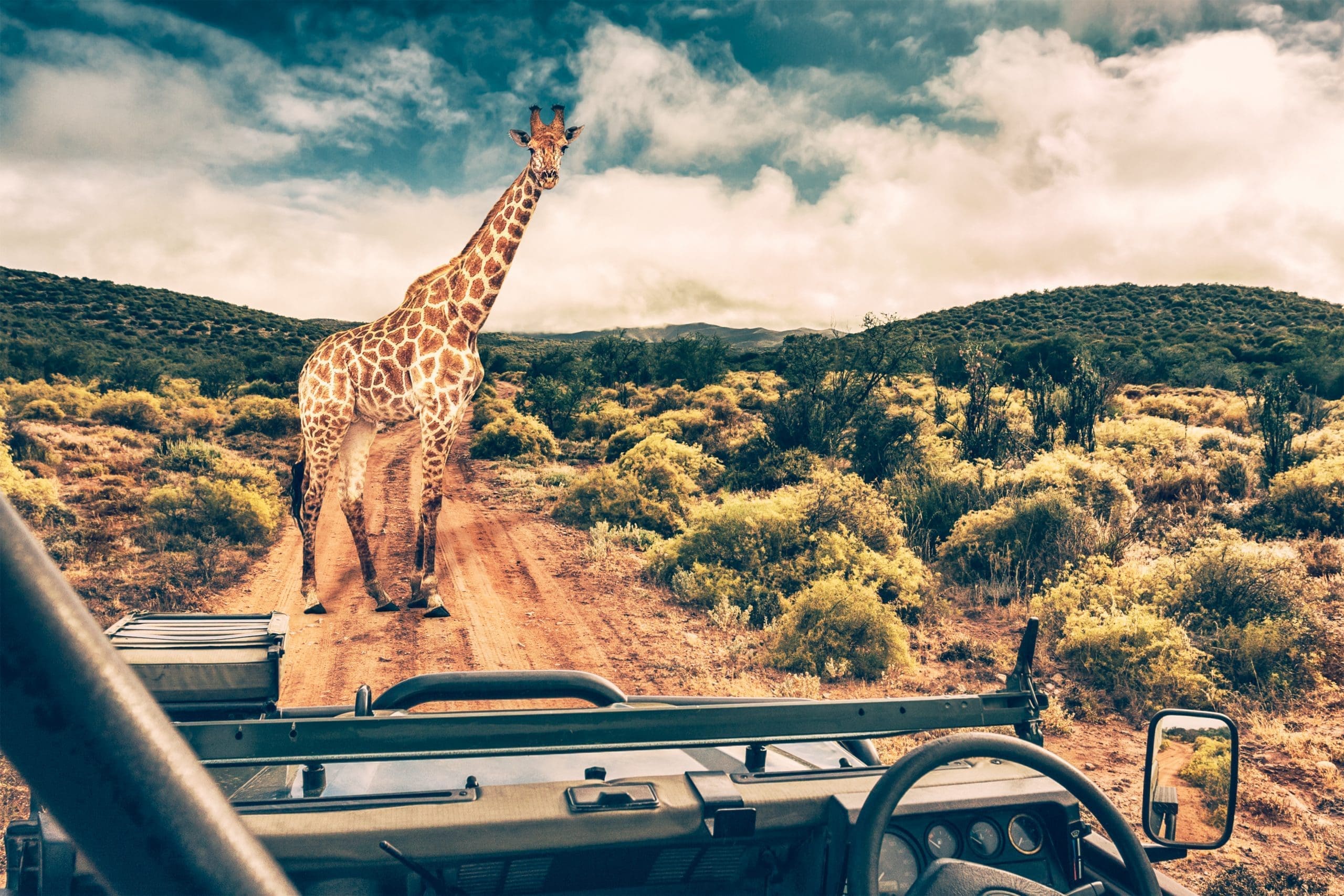
4. Chobe National Park, Botswana
If elephants are your spirit animal, then Chobe National Park is your dream destination. Known as the “Land of the Giants,” Chobe boasts one of the largest elephant populations in Africa, with an estimated 50,000 pachyderms roaming its landscapes.
But the park’s allure doesn’t stop there—it’s also home to a dazzling array of other wildlife and some of the most unique safari experiences on the continent.
Why Visit?
Chobe offers a rare blend of land and water safaris, making it one of the best national parks in Africa for variety. The park is particularly magical during the dry season, as animals gather in huge numbers along the Chobe River.
Must-Do Activities:
- Boat Safaris: Drift along the Chobe River for unparalleled views of elephants, hippos, and crocodiles.
- Game Drives: Explore the park’s diverse terrains, from lush floodplains to dry savanna.
- Fishing Excursions: For a different kind of adventure, try your hand at catching tiger fish in the Chobe River.
Chobe National Park is often called the “elephant capital of Africa” and plays a vital role in conserving these gentle giants.
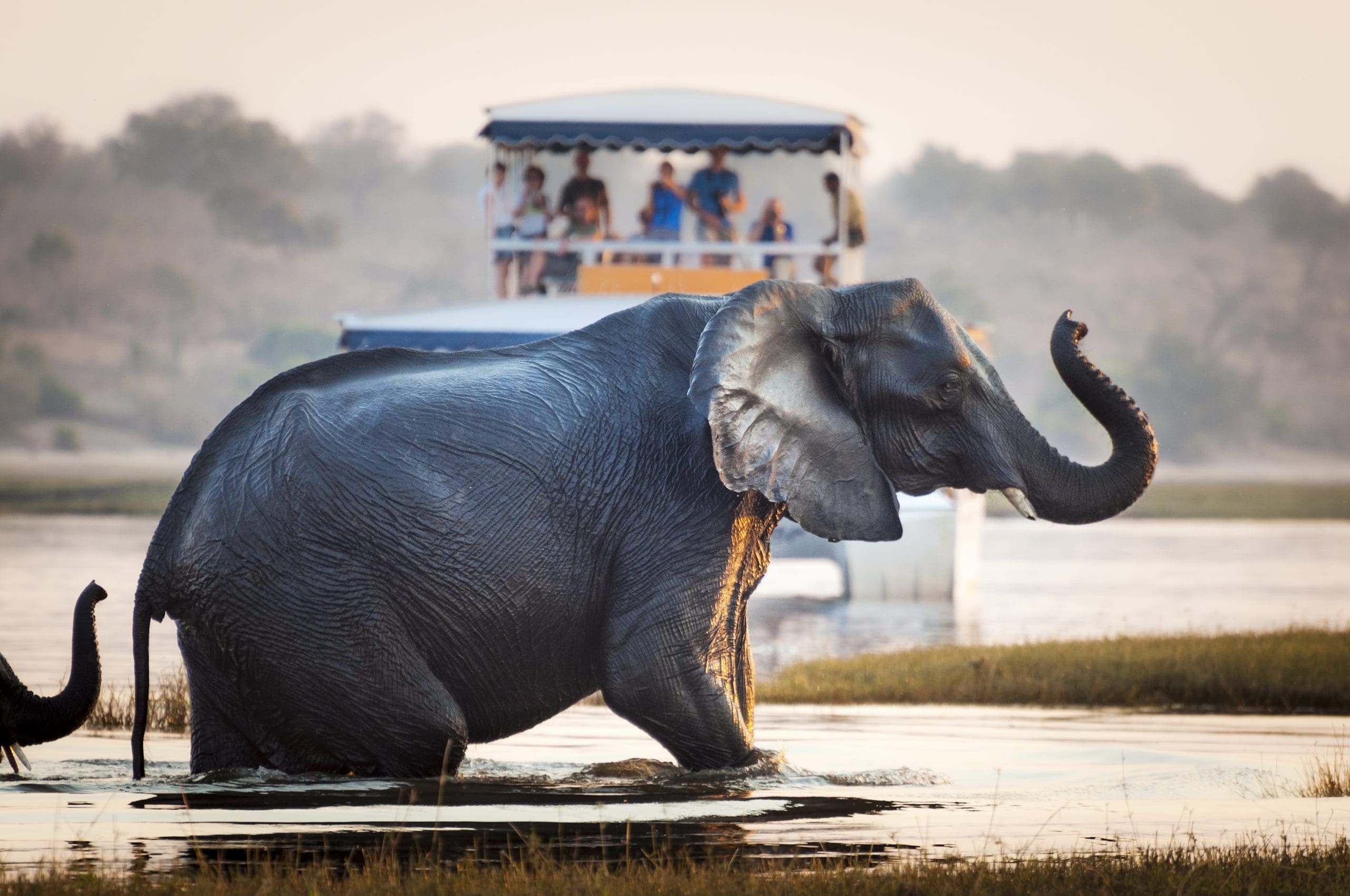
5. Mana Pools National Park, Zimbabwe
Set along the banks of the mighty Zambezi River, Mana Pools National Park is a UNESCO World Heritage Site and a haven for wildlife enthusiasts.
Known for its stunning river views and thrilling walking safaris, Mana Pools offers one of the most immersive safari experiences in Africa.
Why Visit?
Mana Pools is renowned for its incredible concentration of wildlife, including elephants, lions, leopards, and large pods of hippos. Its scenic landscapes of floodplains, forests, and waterways create the perfect backdrop for both adventure and relaxation.
Must-Do Activities:
- Walking Safaris: Explore the park on foot for an intimate and exhilarating wildlife experience.
- Canoeing on the Zambezi River: Paddle alongside elephants, hippos, and crocodiles.
- Game Drives: Spot predators and herbivores in the park’s diverse habitats.
The name “Mana” means “four” in Shona, referencing the four permanent pools formed by the Zambezi River that are a magnet for wildlife during the dry season.
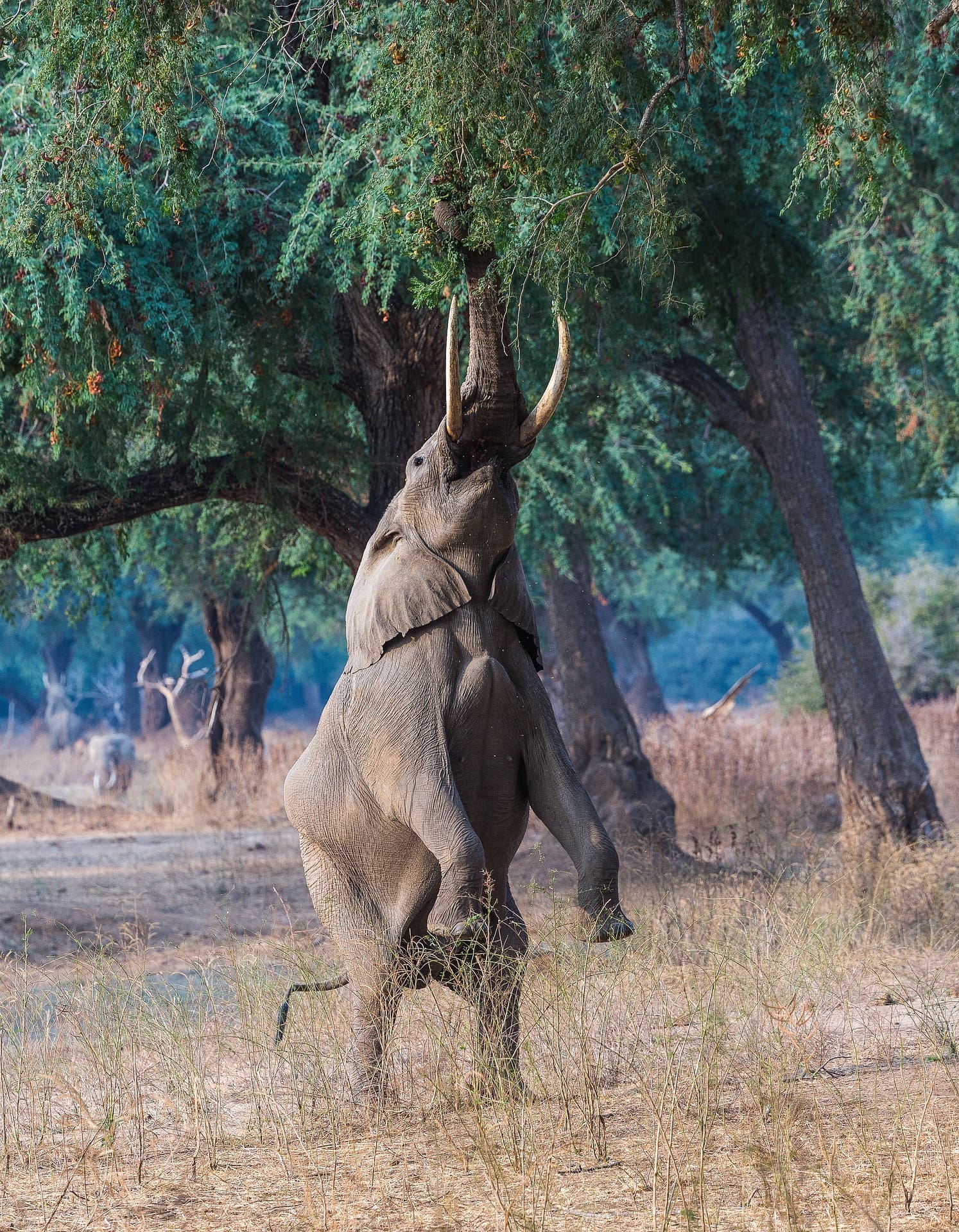
6. South Luangwa National Park, Zambia
If you’re after a safari experience that feels raw and untouched, South Luangwa National Park is the place to be.
Often described as the birthplace of the walking safari, this park invites you to ditch the vehicle and immerse yourself in the sights, sounds, and smells of the African bush.
Why Visit?
South Luangwa is a haven for wildlife, boasting one of the highest densities of leopards in Africa. Known as the “Valley of the Leopard,” it offers incredible predator sightings alongside diverse species like hippos, giraffes, and crocodiles. It’s also one of the few parks where walking safaris are a major highlight.
Must-Do Activities:
- Walking Safaris: Step into the wild with an experienced guide and see the landscape in a way no game drive can replicate.
- Night Drives: South Luangwa is one of the few parks that allow night drives, offering a rare glimpse into nocturnal wildlife.
- Bird Watching: With over 400 bird species, it’s a paradise for bird lovers.
The park’s Luangwa River is home to one of the largest hippo populations in the world, with thousands of these creatures calling it home.
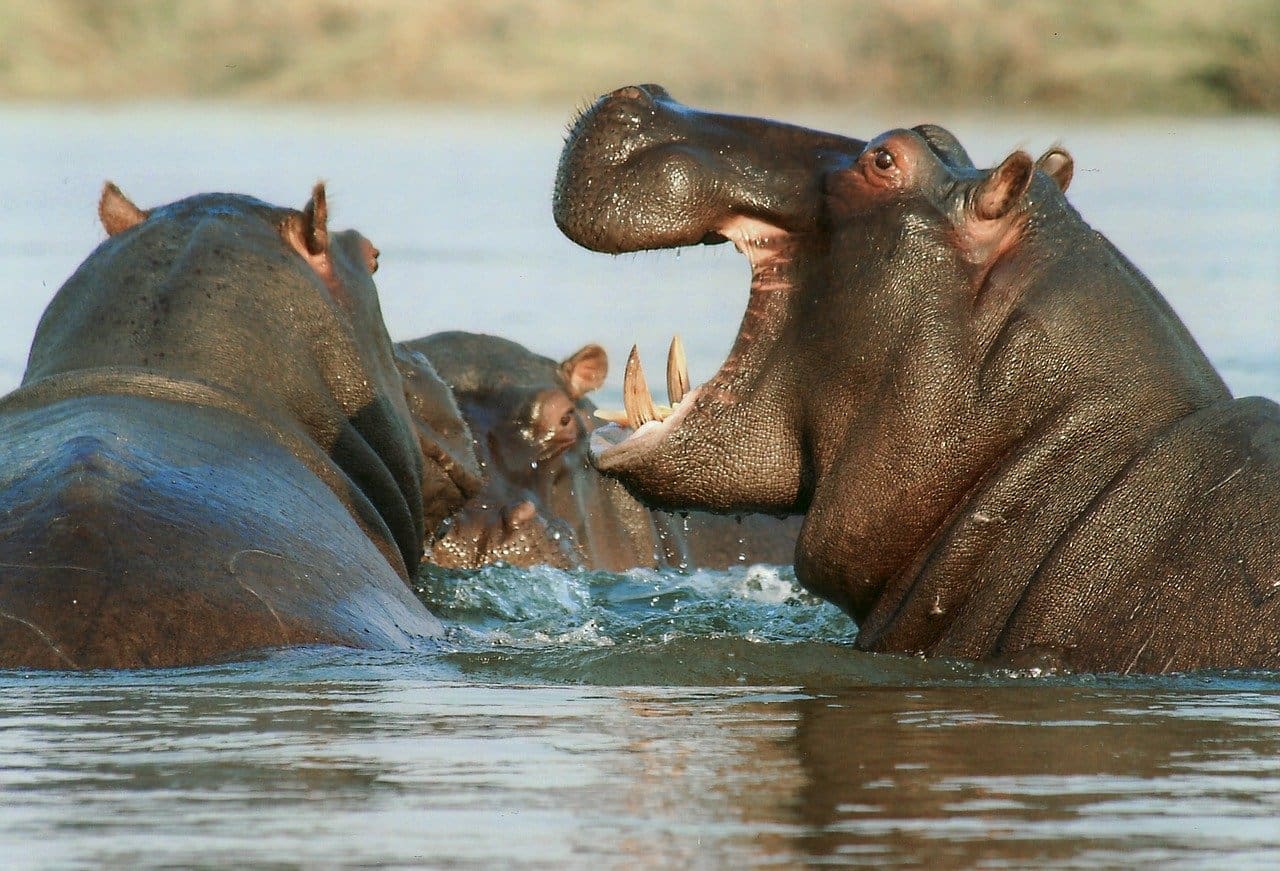
7. Etosha National Park, Namibia
If dramatic landscapes and stark beauty are what you’re after, Etosha National Park in Namibia is sure to captivate you.
Its shimmering salt pans, floodlit waterholes, and striking contrasts make it one of the most unique national parks in Africa.
Why Visit?
Etosha is all about the waterholes. During the dry season, animals congregate around these life-giving spots, making it one of the best parks for wildlife viewing. The park’s unique landscapes also offer a surreal, almost otherworldly feel that’s a photographer’s dream.
Must-Do Activities:
- Self-Drive Safaris: Explore at your own pace and enjoy the thrill of spotting elephants, rhinos, and lions around the waterholes.
- Night Wildlife Viewing: Some camps have floodlit waterholes, allowing for 24/7 wildlife observation.
- Photography: Capture stunning shots of animals set against the vast, shimmering Etosha Pan.
The Etosha Pan is so vast that it can be seen from space and forms the heart of the park’s unique ecosystem.
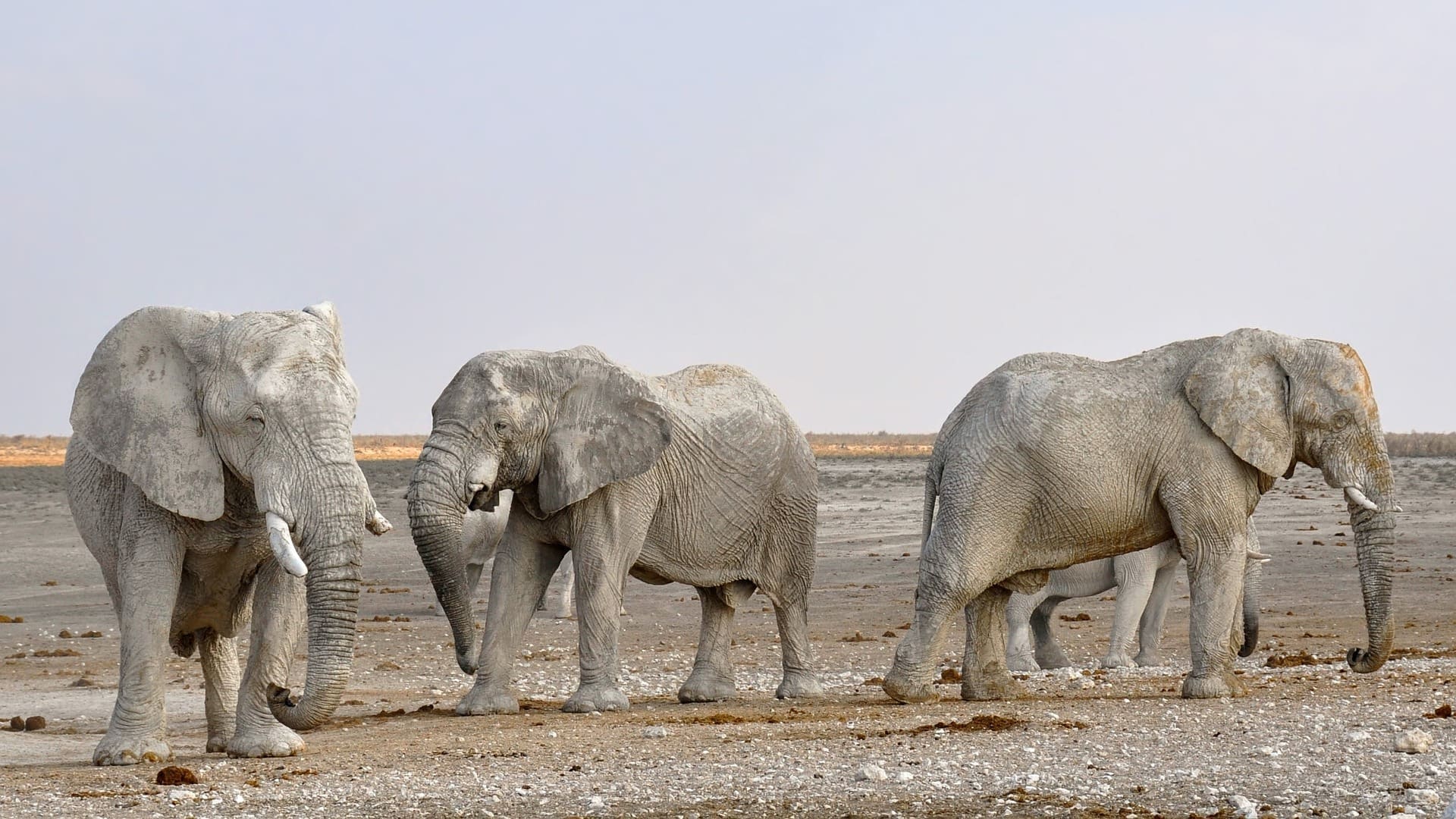
8. Bwindi Impenetrable National Park, Uganda
For those who crave a truly rare and humbling wildlife encounter, Bwindi Impenetrable National Park in Uganda is unmatched.
This dense, ancient rainforest is one of the last strongholds of the critically endangered mountain gorillas, offering an experience that’s as exclusive as it is life-changing.
Why Visit?
Bwindi is one of only a handful of places in the world where you can trek through lush jungles to observe mountain gorillas in their natural habitat. The park’s biodiversity is astounding, with hundreds of bird species, butterflies, and unique flora adding to its allure.
Must-Do Activities:
- Gorilla Trekking: Spend an unforgettable hour with a family of gorillas after a challenging but rewarding trek through the forest.
- Bird Watching: Home to over 350 bird species, Bwindi is a birding hotspot.
- Nature Walks: Explore the forest’s enchanting trails, where every turn offers a new discovery.
Bwindi is home to almost half of the world’s remaining mountain gorillas, making it one of the most critical conservation areas on the planet.
9. Ngorongoro Conservation Area, Tanzania
Imagine descending into a massive volcanic caldera teeming with wildlife—a unique, self-contained ecosystem brimming with drama and diversity.
Welcome to the Ngorongoro Conservation Area, one of Tanzania’s most iconic destinations.
Why Visit?
The Ngorongoro Crater is often called “Africa’s Garden of Eden” for good reason. Its rich volcanic soils and permanent water sources support a staggering array of wildlife, including the Big Five, cheetahs, hyenas, and hippos. The lush crater floor, encircled by steep, forested walls, creates a natural amphitheater for incredible wildlife sightings.
Must-Do Activities:
- Game Drives in the Crater: Spot herds of zebras, wildebeests, and elephants, along with elusive black rhinos.
- Cultural Tours: Visit nearby Maasai villages to experience their traditions and way of life.
- Hiking Adventures: Explore the rugged highlands surrounding the crater for sweeping views and fresh perspectives.
The Ngorongoro Crater is the world’s largest intact volcanic caldera and a UNESCO World Heritage Site.
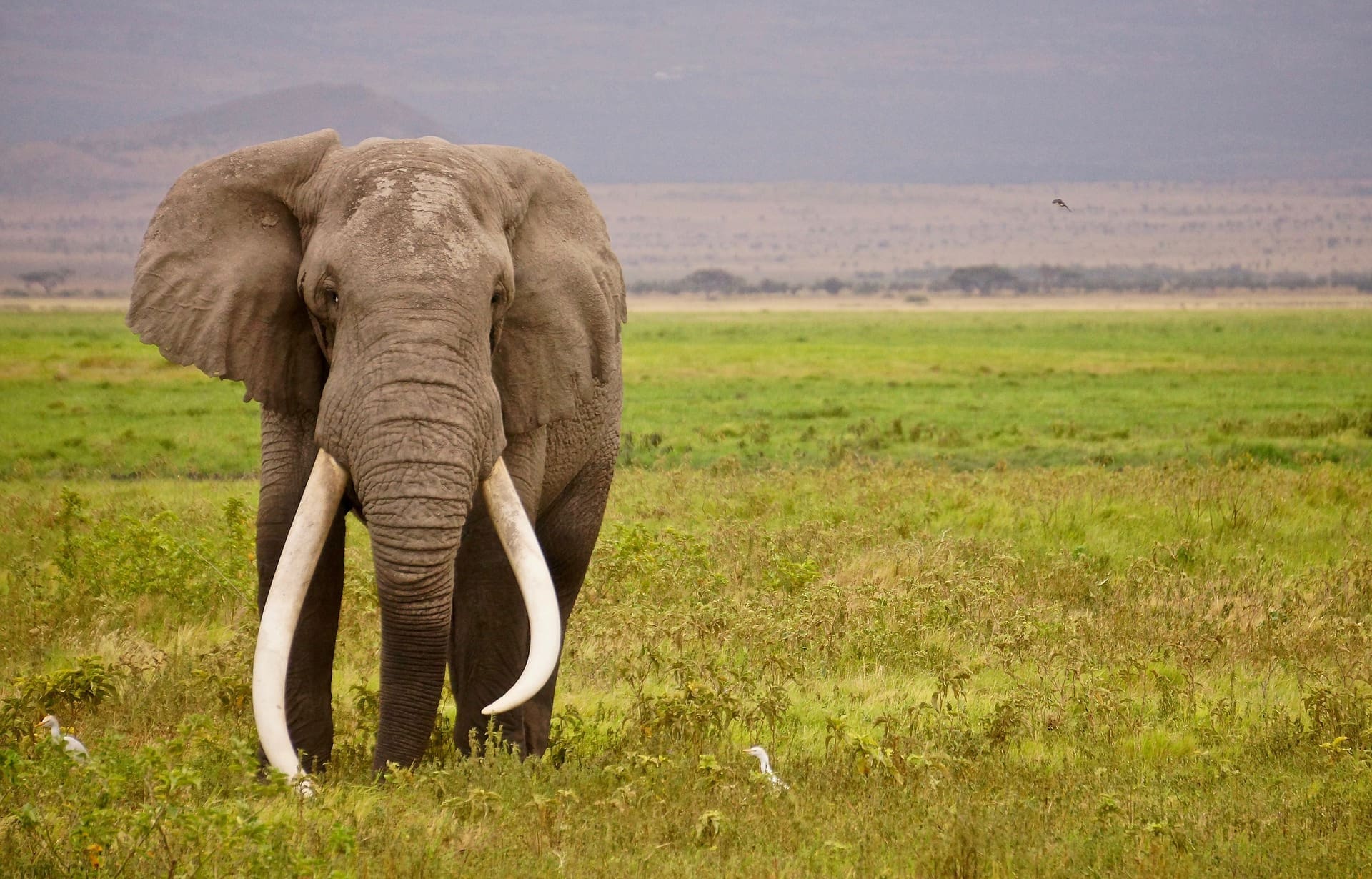
10. Okavango Delta, Botswana
A shimmering oasis in the heart of Botswana’s arid landscape, the Okavango Delta is one of the most unique safari destinations in the world.
This sprawling inland delta, a labyrinth of waterways and islands, offers an entirely different perspective on African wildlife.
Why Visit?
The Okavango Delta is a paradise for those seeking both tranquility and adventure. Unlike traditional game drives, here you’ll explore by boat or mokoro (a traditional dugout canoe), gliding silently past elephants, hippos, and an abundance of birdlife. The delta’s pristine, untouched ecosystem is a UNESCO World Heritage Site and a haven for diverse wildlife.
Must-Do Activities:
- Mokoro Rides: Drift through crystal-clear channels for an up-close encounter with the delta’s beauty and its resident wildlife.
- Walking Safaris: Set foot on one of the delta’s islands to explore on foot with expert guides.
- Game Drives: Combine land-based safaris with water adventures for the full Okavango experience.
The Okavango Delta is the world’s largest inland delta and an important lifeline for thousands of species, including some of the rarest animals in Africa.
11. Hwange National Park, Zimbabwe
Known for its vast wilderness and incredible elephant populations, Hwange National Park is Zimbabwe’s largest and most diverse wildlife reserve.
It’s a hidden gem in Africa, offering both iconic sightings and off-the-beaten-path adventures.
Why Visit?
Hwange is famed for its enormous herds of elephants—some of the largest in Africa—and its variety of landscapes, from sweeping savannas to dense woodlands. The park is home to over 100 mammal species and offers a more intimate, less crowded safari experience compared to other major parks. It also gained global recognition as the home of Cecil the Lion, a beloved symbol of conservation whose legacy continues to inspire efforts to protect wildlife.
Must-Do Activities:
- Game Drives: Explore the park’s vast terrains, where you’ll encounter lions, zebras, and the iconic elephants.
- Night Safaris: Hwange is one of the few parks in Africa where night drives are allowed, offering a chance to spot nocturnal predators.
- Bird Watching: With over 400 bird species, it’s a paradise for bird enthusiasts.
Hwange boasts one of Africa’s largest elephant populations, with over 40,000 elephants roaming its landscapes.

12. Tarangire National Park, Tanzania
For those who want a quieter, more intimate safari experience, Tarangire National Park is a hidden treasure in northern Tanzania.
Known for its ancient baobab trees and massive elephant herds, this park offers a serene escape from the more famous safari hotspots.
Why Visit?
Tarangire’s large elephant populations are a sight to behold, particularly during the dry season when hundreds gather near the Tarangire River. The park is also a bird lover’s paradise, with over 500 species thriving in its diverse habitats. Its distinct landscapes, from savannas to wetlands, make every game drive unique.
Must-Do Activities:
- Game Drives: Spot elephants, lions, giraffes, and even leopards as you traverse this tranquil park.
- Walking Safaris: Explore the park on foot for an up-close view of its stunning flora and fauna.
- Night Drives: Catch nocturnal animals like civets and porcupines in action.
During the dry season, Tarangire hosts the second-highest concentration of wildlife in Tanzania after the Serengeti, making it a must-visit during this time.
13. Queen Elizabeth National Park, Uganda
Nestled in the heart of Uganda, Queen Elizabeth National Park is a dynamic destination offering a mix of savanna, wetlands, and lush forests.
It’s a park that balances incredible wildlife sightings with unique and immersive activities.
Why Visit?
This park is famous for its tree-climbing lions, a rare and fascinating behavior that adds an extra thrill to game drives. It’s also home to the Kazinga Channel, a natural waterway teeming with hippos, crocodiles, and an array of birdlife. Combine this with chimpanzee trekking, and you have one of the most diverse safari experiences in Africa.
Must-Do Activities:
- Game Drives: Marvel at the tree-climbing lions and other iconic African wildlife.
- Boat Safaris on the Kazinga Channel: Get close to hippos, crocodiles, and colorful bird species.
- Chimpanzee Trekking: Explore the nearby Kyambura Gorge for a chance to see chimpanzees in their natural habitat.
Queen Elizabeth National Park is home to over 600 bird species, making it one of the best parks in Africa for birdwatching.
14. Kafue National Park, Zambia
For travelers seeking solitude and raw wilderness, Kafue National Park is the ultimate destination.
As one of the largest national parks in Africa, it offers vast, untouched landscapes teeming with wildlife and an off-the-beaten-path safari experience.
Why Visit?
Kafue’s remote nature makes it a haven for wildlife enthusiasts who value exclusivity. The park is home to diverse ecosystems, from expansive floodplains to dense woodlands, and boasts a wide array of wildlife, including rare antelope species and apex predators like lions and leopards.
Must-Do Activities:
- Game Drives: Explore the park’s vast terrains for sightings of elephants, cheetahs, and wild dogs.
- Boat Cruises: Drift along the Kafue River, spotting hippos, crocodiles, and vibrant birdlife.
- Walking Safaris: Immerse yourself in the wilderness and connect with nature on a guided walking tour.
At 22,400 square kilometers, Kafue National Park is one of the largest in Africa, covering an area nearly the size of Wales.
15. Amboseli National Park, Kenya
With the majestic Mount Kilimanjaro as its backdrop, Amboseli National Park is as iconic as it is breath-taking.
Known for its massive elephant herds and postcard-perfect landscapes, this park offers a safari experience that blends beauty and wildlife.
Why Visit?
Amboseli’s open plains make wildlife easy to spot, and the park is famous for its enormous elephants, often seen silhouetted against Kilimanjaro. Beyond elephants, the park is rich in predators like lions and cheetahs, as well as an impressive array of birdlife.
Must-Do Activities:
- Game Drives: Experience up-close encounters with Amboseli’s elephants and other wildlife.
- Cultural Visits: Spend time with the Maasai people and learn about their rich traditions.
- Photography: Capture iconic shots of wildlife framed by Africa’s highest peak.
Amboseli is one of the best places in Africa for viewing large herds of elephants, some of which are among the largest in the world.
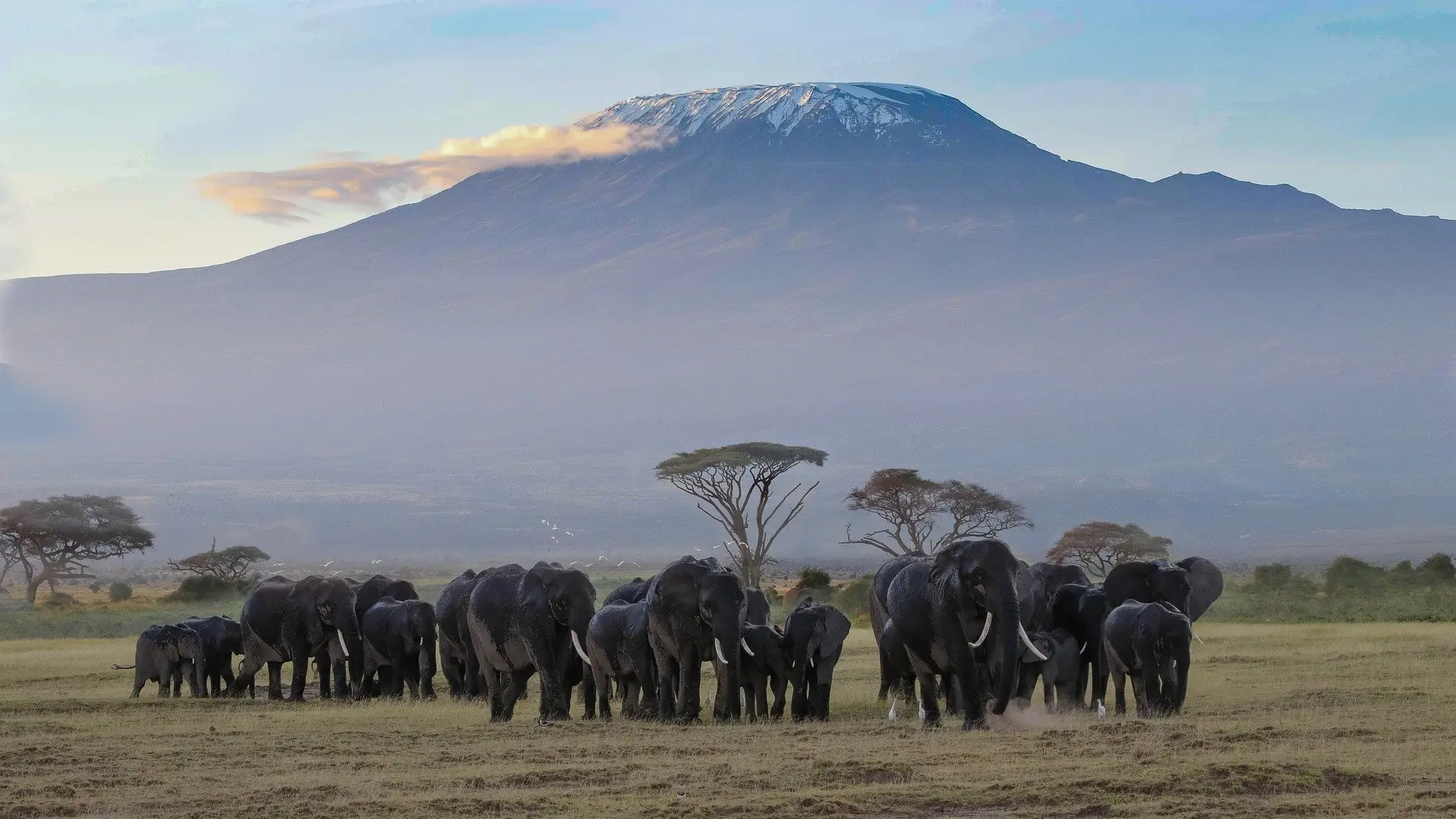
16. Virunga National Park, Democratic Republic of Congo
As Africa’s oldest national park and a UNESCO World Heritage Site, Virunga National Park in the Democratic Republic of Congo is a treasure trove of biodiversity and raw natural beauty.
Known for its active volcanoes and mountain gorillas, Virunga offers one of the most unique and adventurous safari experiences in Africa.
Why Visit?
Virunga is one of only a few places in the world where you can trek to see mountain gorillas. Beyond the gorillas, it’s also home to breathtaking landscapes, including the dramatic Nyiragongo Volcano, with its glowing lava lake—a sight you’ll never forget.
Must-Do Activities:
- Gorilla Trekking: Get up close with one of Virunga’s habituated gorilla families.
- Hiking Nyiragongo Volcano: Climb to the summit to witness the world’s largest lava lake.
- Bird Watching: Discover over 700 bird species that thrive in the park’s diverse ecosystems.
Virunga National Park is one of the most biologically diverse protected areas in the world, home to three-quarters of all known African primates.
Why these African National Parks Should Be on Your Bucket List
From the vast plains of the Serengeti to the tranquil waterways of the Okavango Delta, the national parks in Africa offer experiences that are as diverse as the continent itself.
Whether you’re seeking the thrill of tracking mountain gorillas in Bwindi, marveling at elephants against the backdrop of Kilimanjaro in Amboseli, or enjoying peaceful mokoro rides in the Okavango Delta, Africa’s national parks deliver adventure, luxury, and unforgettable memories.


